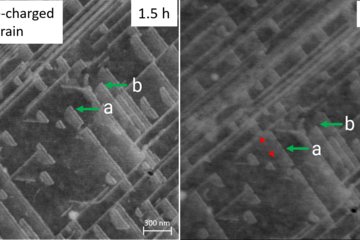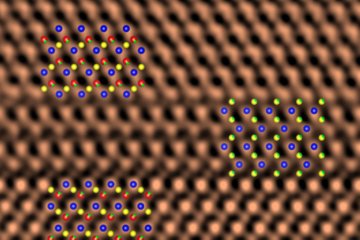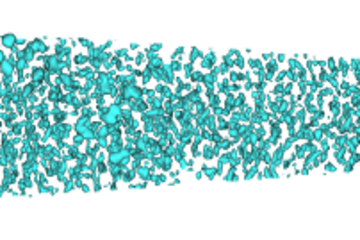All genres
61.
Talk
Segregation Engineering in Medium Manganese Steels. TMS2017 Annual Meeting & Exhibition, San Diego, CA, USA (2017)
62.
Talk
Austenite Formation along Dislocations in Medium Manganese Steels. TMS 2017 Annual Meeting & Exhibition, San Diego, CA, USA (2017)
63.
Talk
Segregation and Austenite Reversion at Dislocations in a Binary Fe–9%Mn Steel Studied by Correlative TEM-atom Probe Tomography. The 3rd International Conference on High Manganese Steels, Chengdu, China (2016)
64.
Talk
Austenite Reversion in Medium Manganese Steels. The 3rd International Conference on High Manganese Steels, Chengdu, China (2016)
65.
Talk
Segregation Engineering - Solute Decoration, Complexions and Transformations for Self-Organized Metallurgical Bulk Nanostructures. MRS Fall Meeting, Boston, MA, USA (2016)
66.
Talk
Size and orientation effects on the elasto-plastic transition and deformation mechanism of twinning-induced plasticity steel micro-pillars. MSE 2016 Conference , Darmstadt, Germany (2016)
67.
Talk
Atoms, ions, electrons: simulated, measured and manipulated. Workshop on Scientific Directions for Future Transmission Electron Microscopy, Jülich, Germany (2016)
68.
Talk
Chemo-Mechanics at Lattice Defects: from Mechanisms to Bulk Alloys. Gordon Research Conference on Thin Film & Small Scale Mechanical Behavior, Lewiston, ME, USA (2016)
69.
Talk
Defect Segregation studied by Correlative Atom Probe Tomography and Electron Microscopy. Japan-Germany Joint Symposium on Advanced Characterization of Nanostructured Materials for Energy and Environment, Conference Center Mutterhaus, Düsseldorf, Germany (2016)
70.
Talk
From grains to atoms: ping-pong between experiment and simulation for understanding microstructure mechanisms. Res Metallica Symposium, Department of Materials Engineering, KU Leuven, Leuven, The Netherlands (2016)
71.
Talk
Segregation engineering in medium manganese steels. Workshop Integrated Computational Grain Boundary Engineering: The role of segregation, Graz, Austria (2016)
72.
Talk
Designing and understanding novel alloys towards superior properties. 2016 European Workshop on Materials Design, Grenoble, France (2016)
73.
Talk
Austenite formation along dislocations in medium manganese steels. Thermec 2016, Intl. Conf. on Processing & Manufacturing of Advanced Materials, Graz, Austria (2016)
74.
Talk
High-Resolution crystal plasticity simulations of real microstructures. 9th GAMM Seminar on MultiScale Material Modeling, Kaiserslautern, Germany (2015)
75.
Talk
Segregation engineering enables nanostructured dual-phase laminates via solute decoration and phase transformation at lattice defects. Colloquium lecture at Department of Mechanical Engineering, Technische Universiteit Eindhoven, Eindhoven, The Netherlands (2015)
76.
Talk
Atomic Scale Analysis of Interfaces: Gibbs Adsorption Revisited. Colloquium at Physics Department, University of Erlangen, Erlangen, Germany (2015)
77.
Talk
Nanostructuring metallic alloys through confined phase transformations. Colloquium Lecture - GDCh (Gesellschaft Deutscher Chemiker)
, Bielefeld, Germany (2015)
78.
Talk
Nanostructured steels: Hierarchical materials engineered down to the atomic scale. European Symposium on Martensitic Transformations, ESOMAT 2015
, Antwerp, Belgium (2015)
79.
Talk
Segregation engineering enables nanostructured bulk steels by confined martensite-to-austenite reversion. Asia Steel International Conference 2015 (Asia Steel 2015), Yokohama, Japan (2015)
80.
Talk
Nanostructured steels: Hierarchical materials engineered down to the atomic scale. ESOMAT 2015, Antwerp, Belgium (2015)











